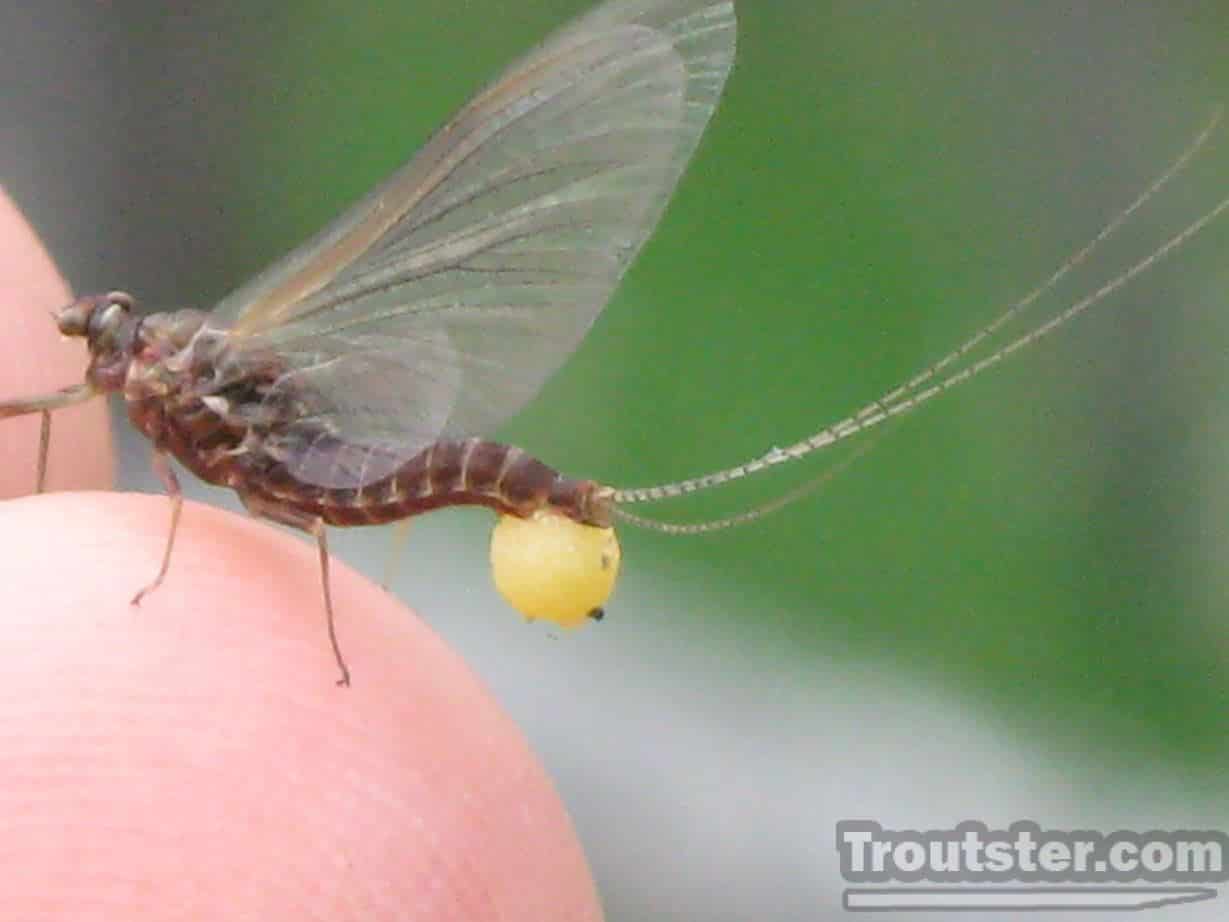This post was last updated on January 15th, 2016 at 12:24 am

Mayflies are an Important Food Source for Trout
These are the most common flies that people use for catching trout. They are usually not only in abundance in every stream with moving water but can also be found in lakes and ponds. Like most flies that trout consume, the mayfly spends its entire life cycle in and around water.
The Life Cycle of a Mayfly
They have a fairly simple life cycle:
- Egg
Larvae
Adult
The adult mayflies gather above the body of the water and breed. They will lay eggs on the surface of the water one by one. The eggs fall to the bottom of the water body into cracks in rocks and eventually hatch into the larval stage known as “nymphs”. The amount of time an individual nymph spends in this stage can vary by the species, but it is usually a significant amount of time. When the nymphs are ready to emerge as adults they will swim to the surface of the water and shed their outer layer. This shedding exposes the wings and soon after the adult mayflies begin to fly.
- The eggs fall down into the cracks in the gravel where they incubate for a short time.
- When the nymphs hatch (Nymph: a stage in the mayfly and stone flies life where they live under the surface of the water). Nymphs can often be seen underneath rocks, logs, and clinging to aquatic vegetation.
- They will begin to transform into adults by floating to the surface of the river and emerging. They shed the nymph skin to expose wings underneath. Once the wings dry out they fly off into the trees for usually a few days. They tend to hatch in large numbers simultaneously. This will cause the trout to go positively bonkers. This is one of the times when most fish on the river are all visibly feeding. Some trout will decide to eat the flies that are just below the surface film. These are known as emergers.
- After the mayflies spend a couple days on the bank they will all gather above the water to mate. They start up rather high in the air and slowly work their way down. They then begin the breeding ritual called the spinner fall. The flies mate laying the eggs on the water in an “orgy” type fashion. Once they have finished breeding they will usually fall to the water dead and their life cycle is complete. This tends to spur the most insane fish feeding frenzy imaginable.
Types of Mayflies
There are a lot of different types of mayflies and they all tend to prefer different habitats. Some types such as the Hexagena Limbata prefer to live in the mucky sediment on the sides of the river, while others prefer to cling to rocks. You can determine what type the trout are eating by checking beneath rocks for specimens. You should have in your fly box a few sizes of each color mayfly. This should ensure that you will have what you need when the trout begin feeding. Mayflies are an important food for the trout, and as you can see; just as important to the fly fisherman.
